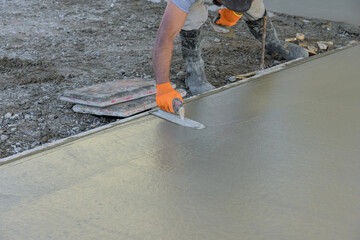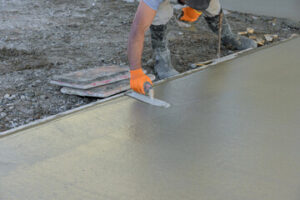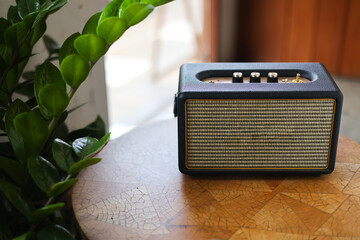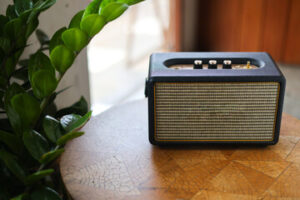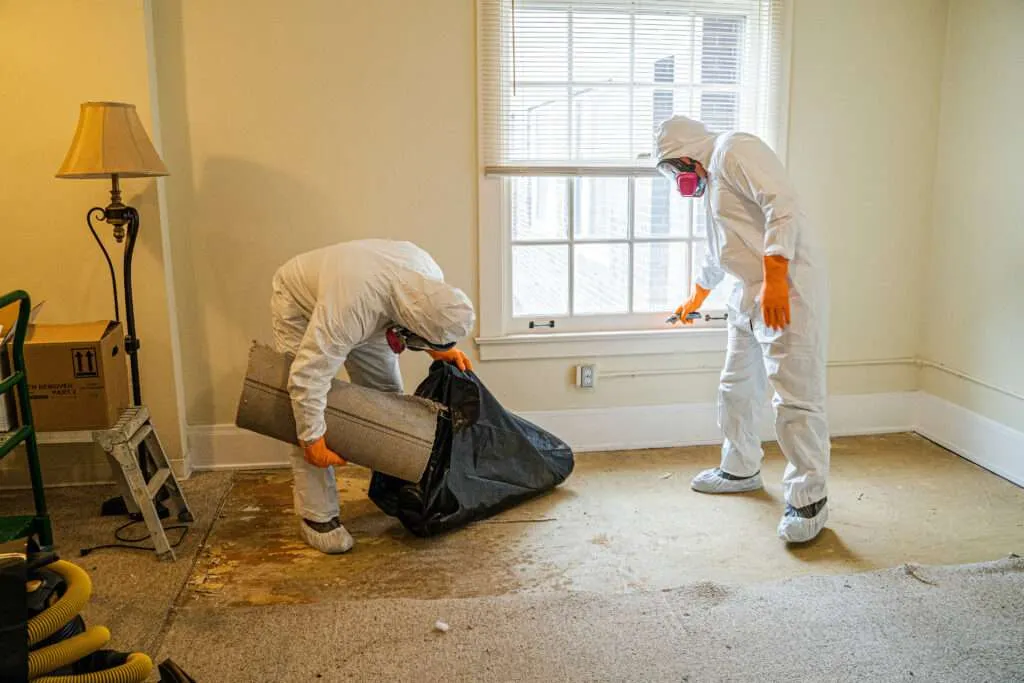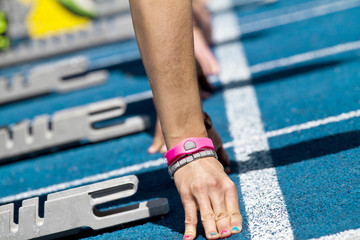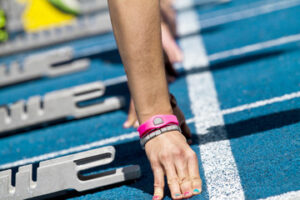Concrete Resurfacing Waco TX is an excellent way to give a new look to old and worn concrete. It saves money over replacing the entire slab and allows you to customize your finish.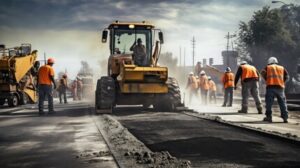
Choosing the right resurfacing option is critical for the performance and longevity of your project. Considering budget is also essential.
Overlays are a great way to revitalize concrete surfaces without the cost of replacing the entire surface. They’re often used to cover stains, cracks, and other cosmetic flaws. These overlays are typically composed of Portland cement, various aggregates, and polymers that make them strong and long-lasting. They also create a very durable bond to existing concrete surfaces. However, it’s important to note that concrete overlays are not a solution for all concrete problems. If your concrete has significant structural issues, such as heaving, severe cracking, spalling due to deicing salts or freeze-thaw cycles, or is resting on unstable soil, an overlay will not improve the situation.
Overlay materials can be used for both new construction and resurfacing projects. They can be applied in a variety of thicknesses, depending on the needs of your project. Most manufacturers will provide a data sheet with specific instructions regarding preparation, installation, and curing for their products. These instructions will help ensure that your concrete overlays are properly installed and will last a long time.
Concrete overlays are available in a wide range of finishes, textures, and colors. These finishes can be applied through the use of integral pigments, dyes, or stains. Some overlays can even be stenciled or stamped for a unique look.
There are many different types of concrete overlays, so it’s important to choose the right one for your project. Some of the most popular include single- and dual-component systems. Single component systems use dry polymers that are activated by water to form a chemical bond with the original concrete surface, while dual-component systems combine the use of primer and dry polymers with fine aggregates to create a mechanical and chemical bond with the existing concrete.
Floating
Resurfacing is a quick and inexpensive way to revive concrete surfaces, such as patios, driveways, sidewalks and more. It helps to mask serious damage and extend the lifespan of the concrete while also making it look nicer. However, it is important to understand that resurfacing products are cosmetic finishes and not repair products. If there are significant cracks or pitting, the concrete needs to be patched before resurfacing can take place.
Before resurfacing, it is crucial to clean the slab and remove any loose material with a broom or pressure washer. It is also important to make sure the surface is dry, as resurfacing will not adhere to wet concrete. It is also essential to tape off any expansion joints to prevent the resurfacing product from filling them in. It is recommended to use duct tape or weather stripping.
Floating is done on nearly every new concrete project, after the surface has been leveled with a screed and before it is troweled to a finish. A float is a flat metal, resin or aluminum tool that is used to smooth the concrete for curing. The float pushes down the aggregate and encourages moisture to rise, helping the concrete dry and creating a better-looking surface.
There are several different types of floating tools available, with the most popular being a magnesium bull float or a wood float. Bull floats are large and flat to aid in spreading the fresh concrete, and they are typically used after a screed has been put down. Using a bull float allows workers to reach areas that a screed could not, which can be a critical step in the finishing process.
Spray-applying
Concrete resurfacing is a process that can restore and beautify a concrete surface without the expense of replacement. It can also extend the life of a surface, and make it easier to clean. It is a great choice for driveways, patios, sidewalks, and pool decks. Several different types of concrete coatings can be applied, but all serve the same purpose: to protect and enhance the surface of the concrete.
The most common type of resurfacing is spray application. This method uses a large machine to apply a special concrete overlay to the existing surface. This overlay can be stained or colored to achieve a unique look. This technique is also ideal for large jobs, as it can be completed quickly.
When choosing a spray texture, it is important to consider how the finish will look when it has been installed. You can choose from a variety of patterns and textures, including those that mimic the appearance of natural stone or brick. In addition, you can use water-based stains to create different colors and designs on the overlay.
If your concrete has cracks, you should fill them before resurfacing it. Then, you can smooth the concrete with a hand float or trowel. It is important to prepare the concrete before resurfacing it, as this will ensure that it lasts longer and looks better.
Whether you want to resurface your concrete patio, driveway, or walkways, it is important to choose the right finish for the job. A resurfacing material that resists UV rays will keep your concrete looking fresh and new. It is also easy to clean, making it an excellent option for areas that are often used.
Stamping
If you want to add a decorative touch to your concrete patio, driveway or pool deck, consider stamped overlays. These are available in a wide range of colors and patterns, making it easy to create the look you desire. They are also easy to maintain. To extend their life, simply sweep them regularly to prevent dirt buildup and seal them at least once every few years.
This type of resurfacing is sprayed on to the existing surface, usually with a spray machine. It is a quick and efficient method that can cover large areas in a short amount of time. However, it is not as durable as other types of resurfacing and may not be suitable for high-traffic areas.
Before applying any overlays, the concrete needs to be thoroughly inspected. Significant structural damage such as large cracks or settling can cause problems later on. Surface deterioration can also prevent the overlay from adhering to the concrete, so it is important to remove any loose materials before resurfacing.
It is also important to prepare the concrete properly before resurfacing it. This includes pressure-washing the slab, repairing any significant damage and removing any stains that may seep through the new surface. It is a good idea to use a concrete penetration grading (CPG) test kit to get an accurate reading of the condition of the existing concrete.
Resurfacing your concrete will not only extend its lifespan and make it easier to clean, but it can also improve the overall appearance of your property. Resurfacing is a cost-effective option, but it is important to choose the right technique for your project. For best results, it is important to hire a professional who has experience in this process.
Engraving
Concrete resurfacing is a great way to revitalize old and worn concrete surfaces such as driveways, patios, sidewalks, or even basements. It is more cost-effective than replacing the existing concrete and can be done in a fraction of the time. This technique uses a concrete overlay or coating to cover the existing surface and enhance its durability and appearance. It can also repair cracks and make the surface less slippery and easier to clean.
Engraving and staining are common concrete resurfacing techniques that add design features to the exterior or interior of the home. They can be used to produce a tile patterned floor, create a stone, flagstone, or cobblestone appearance, or just add color to the concrete. Engraving can be done by hand, machine, or laser. It is a great option for identification numbers or logos in parking lots, room motif accents, residential entranceway vertical markings, and more. Engraved designs are permanent and don’t present a trip or safety hazard, unlike painted lines that can fade or chip.
Staining can be done in a variety of ways, including acid etching and chemical staining. These methods work by penetrating the concrete to create a mottled or variegated appearance. The result is a natural-looking and durable surface that resists dirt, oil, grease, and other contaminants.
When considering concrete resurfacing, it is important to know the size and complexity of the project. This will help you determine the total cost of the work. The size of the project will influence the amount of labor required, which in turn influences the overall price. Additionally, if you are planning on adding a pattern to the concrete, you should consider how much this will add to the overall cost.

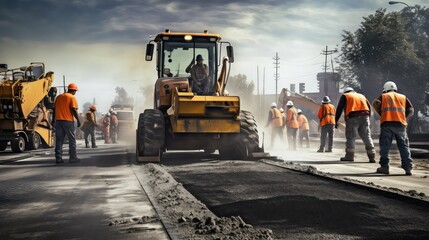
:strip_icc()/person-cleaning-out-roof-gutter-a7d758c873274953bd00f9dfd35b665d.jpg)


